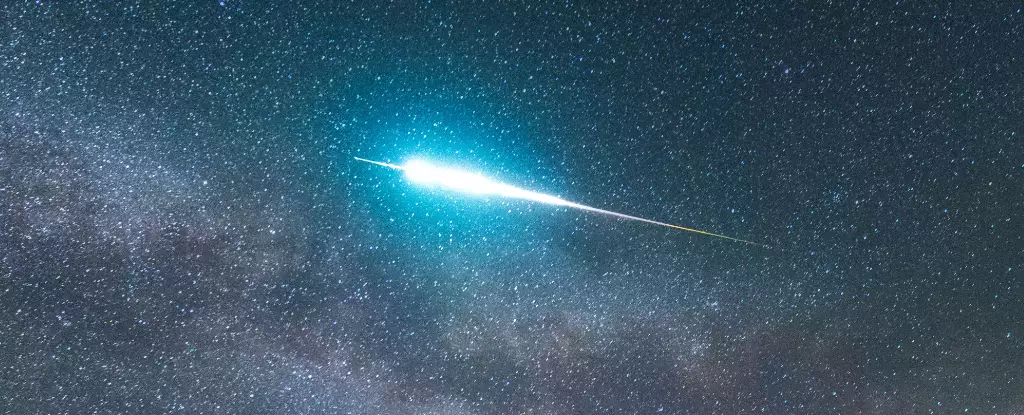A celestial treat is in store for stargazers this week as two meteor showers, the Southern Delta Aquariids and Alpha Capricornids, are set to peak simultaneously on Tuesday evening. While both are set to dazzle viewers, the Alpha Capricornids is particularly renowned for its breathtakingly bright fireballs. The optimal time to witness a meteor shower, including this double feature, is said to be between 2 am and 4 am local time. Stargazers residing in the Southern Hemisphere are poised to have a more spectacular viewing experience. However, those in the Northern Hemisphere can also revel in the beauty of the display with careful planning and a strategic location.
If you find yourself in the United States and are eager to witness the meteor showers, planetary astronomer Nick Moskovitz of Lowell Observatory in Arizona recommends finding a spot with an unobstructed view of the southern horizon while being as far away as possible from light pollution. Oftentimes, observers may feel inclined to give up on meteor watching prematurely, but Moskovitz asserts that patience is key. It takes at least 15 minutes for the eyes to adjust to the darkness fully. Therefore, settling in comfortably and allowing ample time for your eyes to acclimatize is crucial to a rewarding viewing experience.
While the Southern Delta Aquariids and Alpha Capricornids meteor showers individually may not be as grandiose as the notable Perseids, their combined appearance presents a rare opportunity to appreciate two distinct types of meteors in a single night. The Southern Delta Aquariids typically yield around 25 shooting stars per hour, while the Alpha Capricornids produce approximately five per hour. Revealingly, the Capricornids meteor shower has a penchant for producing remarkable fireballs, a phenomenon that captures the excitement of onlookers. The thought of witnessing these celestial events in tandem on a single night makes this double meteor shower a unique and captivating astronomical occurrence.
Meteor showers, such as the one anticipated, occur when the Earth passes through streams of particles like dirt, ice, and dust left behind by comets traversing the solar system. When these particles collide with Earth’s atmosphere, they disintegrate, emitting heat and creating the visually stunning streaks of light known as shooting stars. Drawing an analogy, Moskovitz likens this interaction to bugs hitting a windshield, with Earth playing the role of the windshield and the meteors acting as the bugs. What makes the double meteor shower particularly fascinating is the rare convergence of two closely positioned streams of debris, resulting in an occasion where two distinct meteor showers can be observed concurrently.
As celestial enthusiasts gear up for the synchronized display of the Southern Delta Aquariids and Alpha Capricornids meteor showers, the anticipation for a mesmerizing night sky is palpable. The chance to witness nature’s own light show in the form of shooting stars and vibrant fireballs is a reminder of the beauty and wonder present in our universe. So, grab a blanket, find a comfortable vantage point, and prepare to be enchanted by the celestial ballet unfolding above.


Leave a Reply